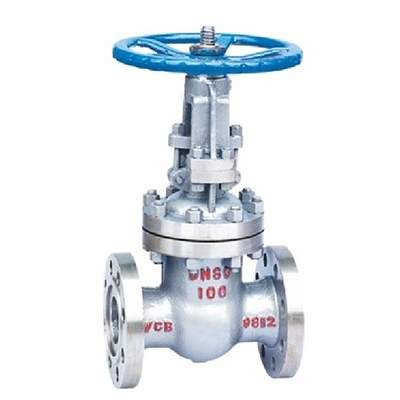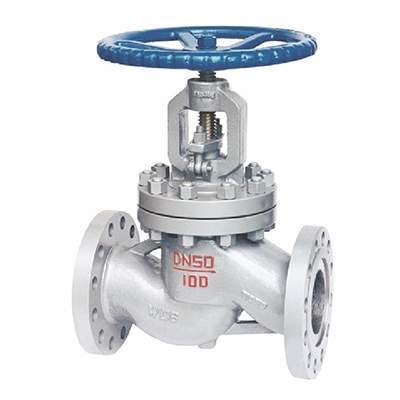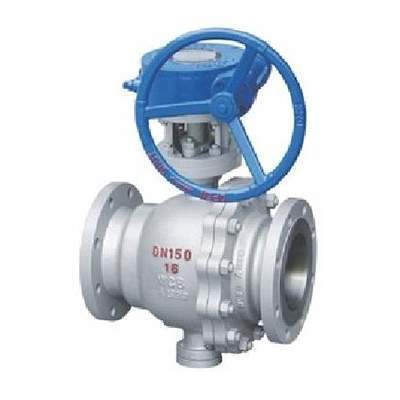Welcome to My Blog!
Before we dive into the content, if you’re interested in our products or have any questions, please feel free to visit our Contact Us page on the website. Our team is ready to assist you with inquiries, orders, or any support you may need.
Now, let’s get started on our journey together. I hope you find the content here insightful, engaging, and valuable.
Introduction

Straight stop valves are a fundamental component in plumbing systems, offering an essential function in controlling water flow. Whether you’re installing a new system or maintaining an existing one, straight stop valves allow plumbers and homeowners to easily isolate specific sections of a plumbing system for maintenance or repairs. They’re found in various plumbing applications, including residential, commercial, and industrial settings. Straight stop valves can be used to control water flow to individual fixtures or to isolate sections of piping, preventing water wastage and minimizing damage during repair work. In this article, we will explore the wide range of applications for straight stop valves, how they function, and why they are an indispensable tool in any plumbing system.
What Are Straight Stop Valves and Why Are They Used in Plumbing?
A straight stop valve is a simple yet highly effective valve that allows you to control the flow of water in a straight line within your plumbing system. These valves are often used to isolate sections of the plumbing, providing a means to turn off the water supply to specific fixtures, such as sinks, toilets, or appliances, without affecting the overall water supply of the entire system.
These valves work by using a simple lever or knob to regulate water flow. When the valve is closed, the water flow to a specific section of the plumbing is completely shut off, which is especially useful when doing repairs, upgrades, or replacing fixtures. Straight stop valves are widely favored for their reliability and ease of use.
Why are they important?
- Ease of Access: They offer a quick and convenient way to shut off water to a specific fixture without disturbing other parts of the plumbing.
- Versatility: Used in residential, commercial, and even industrial plumbing applications, straight stop valves provide flexibility in controlling water flow in various settings.
- Cost-Effective: These valves are often less expensive than more complex valve systems, making them a highly cost-effective solution for controlling water in plumbing systems.
How Straight Stop Valves Control Water Flow in Residential Systems
In residential plumbing systems, straight stop valves are typically installed beneath sinks, toilets, or appliances that require individual water control. They provide homeowners with a simple and effective method to control water flow to these fixtures, which is particularly useful when making repairs, installing new fixtures, or replacing worn-out plumbing components.
For example, if a faucet is leaking or a pipe needs to be replaced, you can easily shut off the water supply to just that fixture without turning off the entire water system for the house. This localized control minimizes disruptions and ensures that other fixtures continue to operate as normal.
Key Benefits in Residential Use:
- Convenience: Straight stop valves make it easy to turn off water to specific fixtures without affecting the whole household’s water supply.
- Maintenance Ease: Homeowners can perform maintenance or repair work on individual fixtures without having to shut down the whole plumbing system, reducing downtime and water wastage.
- Space-Saving: These valves are compact, making them ideal for installation in tight spaces like under sinks or behind toilets, where space is often limited.
The Role of Straight Stop Valves in Commercial Plumbing Systems

In commercial plumbing systems, straight stop valves are often used in larger buildings, such as restaurants, office buildings, and hotels, to control water flow to various fixtures or sections of the plumbing system. By allowing plumbers or maintenance personnel to isolate specific parts of the system, straight stop valves help ensure that repairs or maintenance can be done without disrupting the entire building’s water supply.
For instance, in a hotel, maintenance teams can use straight stop valves to shut off water to specific rooms or floors when performing plumbing repairs, allowing guests to continue using the rest of the facility’s plumbing without interruptions. Similarly, in a restaurant, straight stop valves are used to isolate water to specific equipment, like dishwashers or beverage machines, while still maintaining water flow to other areas of the kitchen.
Commercial Uses Include:
- Restaurants and Hotels: These valves provide the ability to shut off water to specific fixtures, such as dishwashers, sinks, or beverage machines, for maintenance, minimizing disruption to operations.
- Office Buildings: Straight stop valves control water flow to restrooms, kitchens, and other facilities independently, ensuring that maintenance can occur without affecting the entire building.
Straight Stop Valves in Fire Protection Systems: An Overview
Fire protection systems rely heavily on water supply and pressure, and straight stop valves play a crucial role in ensuring that these systems are both operational and maintainable. These valves are used to isolate sections of fire suppression systems for maintenance, testing, or repair without disrupting the overall system’s functionality.
In commercial and industrial buildings, fire protection systems often need regular inspections and maintenance to comply with fire safety regulations. Straight stop valves allow for easy isolation of sections of the fire protection system, ensuring that maintenance work can be done quickly and without interrupting the operation of the rest of the system.
Importance in Fire Protection:
- Quick Isolation: In the event of maintenance or testing, straight stop valves allow for fast isolation of sections of the fire suppression system without affecting the overall operation.
- Pressure Management: These valves help regulate pressure within the fire protection system to ensure it operates efficiently during an emergency.
- Compliance: Fire protection systems must be regularly tested and maintained. Straight stop valves are essential for meeting fire safety codes and ensuring the system is operational when needed.
Straight Stop Valves vs. Ball Valves: Which Is Better for Plumbing?
When it comes to choosing the right valve for a plumbing system, many homeowners and plumbers may be faced with a decision between straight stop valves and ball valves. Both types of valves serve similar purposes, but their designs, uses, and benefits vary significantly.
Straight Stop Valves:
- Best suited for residential and light commercial applications where quick shut-off control is needed for individual fixtures.
- Ideal for tighter spaces and applications that do not require constant flow control.
Ball Valves:
- Preferred for larger commercial or industrial applications due to their durability and ability to handle high-pressure systems.
- Provide precise flow control and are suitable for use in systems that require frequent adjustments.
For most residential applications, straight stop valves are typically the better choice due to their simplicity, ease of installation, and affordability.
Choosing the Right Material for Straight Stop Valves in Plumbing
The material of the straight stop valve is one of the most important factors in determining its performance and durability. Valves made from different materials offer varying levels of corrosion resistance, pressure tolerance, and durability, depending on the specific plumbing system.
Common Materials Used:
- Brass: Brass is one of the most commonly used materials for straight stop valves due to its excellent corrosion resistance and strength. It is ideal for use in residential and commercial plumbing systems, especially in applications where reliability and long-term performance are needed.
- Stainless Steel: Stainless steel offers superior durability, resistance to corrosion, and is ideal for use in more demanding environments, such as industrial plumbing systems, or where exposure to water with high mineral content is common.
- Chrome-Plated: Chrome-plated straight stop valves are often used in residential applications, offering a polished and aesthetically pleasing finish while maintaining the necessary functionality.
Choosing the Right Material:
- Evaluate Fluid Type: If the water contains chemicals or minerals, consider materials like stainless steel that offer higher resistance to corrosion.
- Environmental Conditions: If the plumbing system is exposed to extreme temperatures or high-pressure conditions, opt for stronger materials like brass or stainless steel.
How to Install Straight Stop Valves in Your Plumbing System
Installing straight stop valves in your plumbing system is a relatively straightforward process, but it requires careful attention to detail to ensure proper functionality. Incorrect installation can lead to leaks, reduced water flow, or even damage to the plumbing system.
Installation Tips:
- Turn Off the Water Supply: Always turn off the main water supply before installing the valve to prevent flooding or water damage.
- Check for Correct Orientation: Make sure the valve is installed in the correct direction of flow. Many straight stop valves have flow direction indicators to help with this.
- Use Proper Tools: Ensure you have the right tools, such as wrenches and pipe cutters, to properly secure the valve and pipe connections.
- Test for Leaks: Once installed, turn on the water supply slowly and check all connections for leaks. Tighten the valve connections as needed.
How Straight Stop Valves Help Prevent Plumbing Leaks
One of the main reasons straight stop valves are widely used is their ability to prevent leaks. By allowing plumbers to isolate specific parts of the plumbing system, these valves make it easy to perform repairs without risking water damage to other areas.
For example, if a pipe or fixture needs to be replaced, the straight stop valve can be closed to prevent water from flowing into that area, reducing the likelihood of leaks during the repair process. This makes it easier to fix minor plumbing issues without worrying about water damage to walls, floors, or other areas of the home or business.
Leak Prevention in Key Areas:
- Under Sinks: A leaking faucet or drain can be isolated quickly by turning off the straight stop valve beneath the sink, preventing water from spilling into cabinets or onto floors.
- Behind Toilets: When performing toilet repairs, the valve allows you to stop water from flooding the area while you make the necessary fixes.
How to Maintain Straight Stop Valves for Long-Term Use
Like all plumbing components, straight stop valves require regular maintenance to ensure they function properly over time. Proper care can extend their lifespan and prevent issues like leaks or corrosion, helping you avoid costly repairs down the line.
Maintenance Tips:
- Inspect Regularly: Look for signs of wear, rust, or leaks around the valve. Make sure the handle turns smoothly and that the valve seals completely when closed.
- Clean the Valve: Flush the valve with clean water to remove any buildup of sediment or debris that could cause blockages.
- Lubricate Moving Parts: If your valve has moving parts, such as a handle or screw mechanism, consider lubricating them occasionally to ensure smooth operation and prevent corrosion.
The Importance of Straight Stop Valves in Water Conservation

Water conservation is becoming increasingly important as global water resources become scarcer. Straight stop valves contribute to water conservation by providing better control over water flow, allowing homeowners and businesses to minimize water waste.
For instance, when a plumbing fixture is leaking, the ability to shut off the water supply to that fixture with a straight stop valve prevents wasted water while repairs are being made. Furthermore, straight stop valves can help regulate water pressure in certain systems, ensuring that water is used efficiently and that unnecessary consumption is avoided.
Water Conservation Benefits:
- Minimizing Wastage: Prevents water from flowing when fixtures or pipes are being repaired, saving significant amounts of water.
- Controlling Pressure: By adjusting the water pressure, straight stop valves help ensure that water is being used efficiently across the system.
- Reducing Environmental Impact: By helping conserve water, these valves play a role in reducing the overall environmental footprint of a household or business.
Conclusion
Straight stop valves are indispensable in plumbing systems, offering a simple, reliable, and cost-effective solution for controlling water flow. Whether you’re using them in a residential or commercial setting, their versatility and functionality make them an essential tool for any plumbing system. From preventing leaks and water damage to improving water efficiency and simplifying repairs, straight stop valves offer a wide range of benefits that make them a must-have for effective plumbing management. Proper installation, maintenance, and selection of the right materials ensure that your straight stop valves will provide long-term, reliable service.
FAQ
How do I know if my straight stop valve needs replacement?
If the valve is difficult to turn, leaking water even when closed, or failing to stop the flow completely, it may need to be replaced.
What is the difference between a straight stop valve and an angle stop valve?
A straight stop valve controls water flow in a straight line, while an angle stop valve changes the direction of the water flow at a 90-degree angle.
Are straight stop valves used in industrial plumbing systems?
Yes, straight stop valves can be used in industrial systems where controlling localized water flow is necessary, though for larger industrial applications, other types of valves may be more appropriate.
